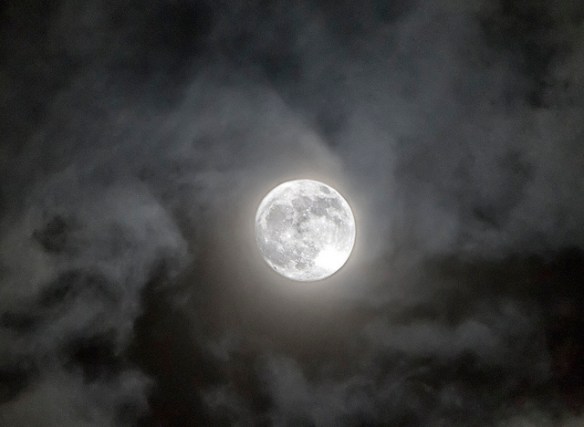
Photo by Patrick Emerson*
The full moon is pregnant with foreboding interpretations, from the legendary werewolves who are supposed to transform under its malevolently shining face to a recent article about November’s upcoming full “supermoon” that faux-reassures, “despite all the rumors… there is no evidence linking supermoons to natural disasters.”
If you look at a full moon and shiver, you aren’t alone—but you are a bit of a mystery. In humanity’s past, the full moon should have been the safest time of the month, since our nocturnal predators tend to attack most on dark nights. The new moon should be spooky, as your hindbrain—unaware that you no longer live on the African savannah (unless you do!)—looks out for predators slinking in the shadows. This is presumably why the fear of darkness is such a common and instinctual one. But the full moon is bright: it should be comforting.
